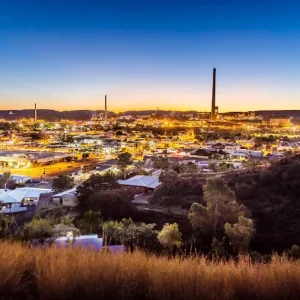Our January edition is usually dedicated to bringing our readers up to date on changes affecting our industry for the coming year, as well as using the misty crystal ball to see where we think we’re all headed. This time, thankfully (?), the changes column is quite bare.
Construction machinery specific, it’s really only the NSW Work Cover Quick Hitch paper that has taken effect, but that’s been covered in previous Newsletters (click here for more details), which of course users of our established Tefra hitches have you covered. This year, it seems both our Federal and State Governments have very few new regulations in store for us. I guess the easiest way to stay popular is to simply keep out of the limelight, and do as little as possible. I’m not actually against that, because most times meddling leads to worse situations than we had before. Having said that, I think there is one sneaking change of legislation that has gone largely unnoticed because businesses have until November 2016 to address the issues. It is of course the “unfair contracts legislation”.
Unfair Contracts legislation
This has largely gone under the radar for most businesses because of the watering down from the original draft (as it passed through the Senate). But that doesn’t mean it is now impotent. The new legislation states that from November 2016, it will be illegal to use standard form contracts for any contract under $300,000 for those spanning less than 12 months, and $1 million for those extending beyond 12 months. What is forgotten is that 97% of businesses are Small businesses. It is estimated that nearly every single contract written by Government and large corporations to businesses employing less than 20 people will be in breach of this legislation.
The easiest way to think of this change is “Do unto others as you would have them do to you” – if your contract doesn’t meet this requirement, it will be illegal. Basically, the contracts are null and void if they give one party (but not the other) the ability to do things, like:
- Avoid or limit the performance of the contract, including stipulating how the supplier is to provide their products or services (this will be the most interesting one, because it appears that this means suppliers can’t be forced to accept EBA’s etc when supplying to another company, right through to stipulating how invoices are done etc).
- Terminate or vary the terms of the contract
- Apply penalties against the other party for breach or termination
- Limit the other party’s legal rights, for instance right to sue or how to sue, whether to renew or not renew the contract, unilaterally vary the price etc.
- Limit the characteristics of the goods or services to be supplied under the contract, i.e “must use XYZ”
- Limit one party’s liability for its agents.
Most supply agreements have been developed by lawyers and managers who have had no interest in fairness, instead focussing on shifting risk. These contracts will be declared void in November, and have no effect, that is, not able to be enforced.
My experience is that the more words in the contract, the worse it is for both parties. Because the author has tried to cover themselves for as many issues as they can think of, they’ve left themselves open on everything else they couldn’t foresee. Now, finally, it seems that we’ll see a re-think in how business should be conducted. I’ve been a proponent for years that the best thing Government could do would be to make some basic (even 1 page) “Standard Business Contract” that brings back fair. And let’s face it, the only time two parties should have to revert to the details of a contract is when all other avenues of trying to work together have been exhausted. At that point, your business relationship is stuffed anyway.
And the Crystal ball says?
The Mining industry has gone through some horrible times over the last 3 years or so. Most commodity prices are low by historical measures, and we will continue to see volatility for the remainder of the year. The surprising thing is that despite many sectors selling product at below cost, we haven’t seen enough businesses go bust to reduce supply. Contrary to the greenies wishes, fossil fuels won’t disappear this year – oil is still the only viable transportable fuel for vehicles for a while yet, and coal is still the most economical grid base load power source that will be required for a few decades yet to electrify the developing world. We exported more raw materials, especially coal, last year than any prior year, but you’d be hard pressed to believe that from the media coverage. The prediction here is that we’ll see more miners globally go broke (Anglo American have already said they’re cutting 1/3 of their global workforce), which will provide a floor price for those miners remaining, allowing commodity prices to rebound later this year. In the mean time, whilst many miners have made cost reductions, this focus will continue.
Construction activity is by media reports quite strong. However, not in Qld, and the activity is confined more to construction of buildings than infrastructure. NSW has a few projects kicking off, but basically Australia has a substantial shortfall of required infrastructure investment. With the exception of the much talked about Toowoomba bypass kicking off, there is next to nothing in the Qld project pipeline. The Civil Contractors Federation (CCF) has estimated that the public infrastructure expenditure deficit for Qld will be $48 billion by 2020 – nearly 9% of Gross State Product, and sadly there are no funding options currently available to get new projects under way because of the State and Federal deficits. At some point, this will have to change. In other words, construction work will continue to fall off, but at a slower rate (it’s so low already that it can’t fall much further).
Overall though, the Australian economy is quite strong by global measures. Tourism has benefited from the weaker Australian dollar, which has also helped the viability of our agriculture and other few remaining exports. Official unemployment remains surprisingly low and our Governments continue to hand out money which has meant there is reasonable confidence in our society so people are busy spending at the shops. With household consumption accounting for 47.1% of our economy (which is way too high), it’s easy to see why some economists are reasonably confident about the year ahead – don’t rock the boat and she’ll stay on keel. Exports are only 16.3% whilst Business Capital Expenditure is 12.2% – most of the rest is Government spending (18.5%) – god help us if that keeps rising as it drags money from the rest of the economy through taxes. Pity we aren’t doing enough about investing for the future though.
The unknowns for the year are mainly about China. We’ve known for about 2 years now that Chinese manufacturing has had a severe downturn, and it appears now that the Chinese Casino (sorry, Stock Market) is belatedly recognising that through a correction. As this is now the world’s second largest economy and not much behind the USA, China is sneezing and the world will catch a cold. As always, there will be an over reaction on things like the stock market, which could affect confidence, but so long as our stock and housing markets don’t collapse we’ll be fine. After all, nothing is actually changing when our stock prices fall, it’s just emotional overreaction to already known factors. Interest rates will stay low because our Governments can’t afford for them to be high (hence propping up the housing market). With our markets gradually trending down it seems to be less disastrous than a big bang that sends everyone scattering.
This year we’ll have a Federal election, which means nobody will do anything to scare voters. Expect also that our politicians will not do anything about addressing the structural issues of our economy: after all, in the last 10 years we haven’t done anything about: poor leadership, lack of well overdue reforms in Industrial Relations and taxation, we’ve had low interest in productivity improvements and insufficient innovation and encouragement of people having a go – so why start now?
All the above has the hallmarks of 2016 being a continuation of the last few years trend, although bottoming out. We’ll however see Asset prices adjusting to where they should be, before improvements from late 2017 onwards. Our industry trends seem to be a couple of years ahead of other sectors, so we should turn the corner sooner.
As always, onwards and upwards!
Fred Carlsson
General Manager




